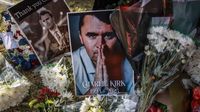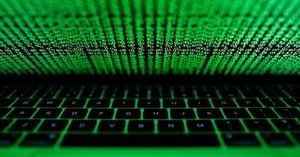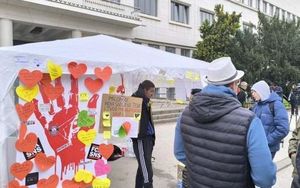In the aftermath of the September 12, 2025, assassination of conservative activist Charlie Kirk, America found itself once again at the crossroads of grief and political blame. The incident, which unfolded in Denver and left the 31-year-old father of two dead, quickly became a flashpoint for the nation’s deepening partisan divide. Within hours, political figures, pundits, and everyday citizens began pointing fingers, each side eager to assign responsibility before the facts had even settled.
President Donald Trump was among the first and loudest voices, declaring on Fox News that “the radicals on the left are the problem,” even before authorities had identified a suspect. According to the Associated Press, this rush to frame acts of violence as the work of political adversaries has become a “grim tradition” in a country where polarization is now the norm rather than the exception. Experts warn that such knee-jerk blame games only stoke the flames of division and risk encouraging further violence.
The next day, authorities announced the arrest of 22-year-old Tyler Robinson from Washington, Utah, in connection with the shooting. Robinson, a registered voter, had not voted in the last two general elections and was unaffiliated with any political party. Still, officials noted that he had recently grown more political and had expressed negative views about Kirk. As reported by Reuters, court documents revealed that Robinson had carved taunting phrases into his ammunition, including a bullet casing inscribed with, “Hey, fascist! Catch!”—a chilling detail that hinted at the influence of online meme culture and the irony-laden language of internet subcultures.
Yet, Robinson’s case, like many recent acts of political violence, defied easy categorization. The FBI has responded to this trend by creating a new category: Nihilistic Violent Extremism. Bruce Hoffman, a terrorism expert at Georgetown University, explained to NPR, “Extremism is becoming a salad bowl of ideologies where you can pick whatever you want.” He added that the rise of so-called lone wolf attacks means that violence is increasingly detached from clear organizational or political goals.
Thomas Mathew Crooks, for example, who shot Trump at a Pennsylvania campaign rally in 2024, left behind little evidence of any political stance at all. The FBI later revealed that Crooks had also researched then-President Joe Biden as a potential target. Such cases, experts say, highlight how the current political ecosystem—fueled by heated rhetoric and social media echo chambers—creates fertile ground for unstable individuals to act out violently, regardless of any coherent ideology.
“What you’re seeing now is exactly how the spiral of violence occurs,” said Robert Pape, a political scientist at the University of Chicago, in an interview with The Washington Post. Pape and others stress that the broader political environment is more important than the individual attacker’s motives. “What they all share is a political ecosystem that’s very permissive about violence towards political rivals,” added Arie Perlinger, a security studies professor at the University of Massachusetts-Lowell. “Because politicians are incentivized to use extreme rhetoric and extreme language, that leads to demonization of political rivals.”
The role of social media in amplifying these divisions was also called out by former Democratic presidential candidate Pete Buttigieg. Speaking on NBC’s “Meet the Press,” Buttigieg lamented, “Many people around America, normal people, not dangerous people, were at a moment when we all should have still been praying for the victim and his family. Instead they were busy online praying for some shred of evidence that the shooter would turn out to be from the other political team. That is not healthy.”
The responses from political leaders and influencers ran the gamut. While some conservatives called for calm, others, such as conspiracy theorist Alex Jones and former Trump adviser Steve Bannon, called for “war.” On the House floor, Rep. Mary Miller, an Illinois Republican, declared, “Kirk’s death was not an isolated tragedy. It is part of a disturbing trend in political violence in our country, encouraged by the radical left and amplified by a corrupt media that has gone from being fake to totally evil.”
Prominent Democrats—including California Governor Gavin Newsom and former House Speaker Nancy Pelosi, whose own husband was the victim of a violent home invasion in 2022—issued statements urging restraint on both sides. House Speaker Mike Johnson, a Republican, also called for lowering the political temperature across the board.
Amid the finger-pointing, data from the Anti-Defamation League painted a sobering picture: from 2022 through 2024, all 61 political killings in the United States were committed by right-wing extremists. That changed on January 1, 2025, when a Texas man flying the Islamic State flag killed 14 people by driving a truck through a crowded street in New Orleans before being fatally shot by police. Hoffman noted that historically, right-wing extremists have been responsible for more attacks on people, while left-wing radicals are more likely to target property. He also pointed out that the extreme right benefits from organized groups like militias.
Nevertheless, political violence from the left has also left its mark. In 2017, a 66-year-old man who supported leftist causes critically wounded Rep. Steve Scalise at a congressional baseball practice. In 2022, an armed man, angry about a leaked Supreme Court ruling on abortion, attempted to enter Justice Brett Kavanaugh’s home but surrendered after seeing U.S. Marshals.
Experts like Pape warn that the cycle of blame and demonization is dangerous. He estimates that about 40% of those who perpetrate political violence have a mental illness. “When there is strong support in the public for political violence, that nudges people over the edge because they think they’re acting in community interest,” he explained. Pape expressed concern that Trump’s one-sided condemnation of left-wing violence—and the tendency of some liberals to paint all Trump voters as racists—only serves to embolden extremists and fuel defiance on both sides. “What we need to do is convince Trump to do more restraining of his side because we’re really in a tinderbox moment,” he cautioned.
Some observers have pointed to Trump’s pardoning of over 1,500 individuals convicted for their roles in the January 6, 2021, Capitol attack as another factor that may encourage political violence. As Hoffman put it, “There’s a belief in certain quarters that, if you engage in violence, the slate can be wiped clean.”
As America struggles to make sense of another act of political violence, the urgent question remains: can the nation find a way to cool its rhetoric and resist the impulse to assign blame before the facts are known? The answer may determine whether the spiral of violence slows—or continues to spin out of control.






